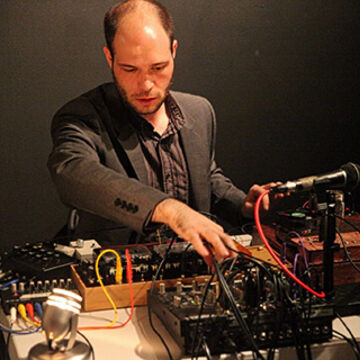| Art and Technology Practices |
Art & Technology / Sound Practices |
2101 (001) |
Fall 2025 |
|
Description
This team-taught, introductory course provides a foundation for most additional coursework in the Art and Technology Studies department. Students are given a broad interdisciplinary grounding in the skills, concepts, and hands-on experiences they will need to engage the potentials of new technologies in art making. Every other week, a lecture and discussion group exposes students to concepts of electronic media, perception, inter-media composition, emerging venues, and other issues important to artists working with technologically based media. Students will attend a morning & afternoon section each day to gain hands-on experience with a variety of forms and techniques central to technologically-based art making.
|
Class Number
1123
Credits
3
|
| Art and Technology Practices |
Art & Technology / Sound Practices |
2101 (001) |
Spring 2026 |
|
Description
This team-taught, introductory course provides a foundation for most additional coursework in the Art and Technology Studies department. Students are given a broad interdisciplinary grounding in the skills, concepts, and hands-on experiences they will need to engage the potentials of new technologies in art making. Every other week, a lecture and discussion group exposes students to concepts of electronic media, perception, inter-media composition, emerging venues, and other issues important to artists working with technologically based media. Students will attend a morning & afternoon section each day to gain hands-on experience with a variety of forms and techniques central to technologically-based art making.
|
Class Number
1112
Credits
3
|
| Hacking the Object |
Art & Technology / Sound Practices |
3045 (001) |
Fall 2025 |
|
Description
DIY has become a widespread movement in the artistic community. Modifying, tinkering, tweaking and downright hijacking have become a commonplace practice among today's artists. Many everyday electronic objects are yearning to be liberated from their banal existences. This course explores readily available materials with a goal of bringing out the hidden aesthetic potentials of electronic devices. Students dig beneath the shiny surfaces to uncover underlying workings, principles and mechanisms. Class projects result in new artworks by reanimating the physical presences and behaviors of the reassembled artifact.
|
Class Number
2199
Credits
3
|
| Retro Tech: Mixed Signals |
Art & Technology / Sound Practices |
4133 (001) |
Spring 2026 |
|
Description
Using the historic technological resources of the Retro Lab, this class examines the signal generation and processing potential of early audio and video synthesizer devices and laboratory test equipment. Through hands-on access to these materials, the class explores what happens when these often-modular systems for sight and sound are interfaced with each and set to interact, feedback, and/or generally wreak havoc as signals cross the audio and visual domains. Synesthesia, pareidolia, and euphoria are all explored alongside Muzak, screensavers, and wallpaper.
Through the work of artists such as Steina and Woody Vasulka, Karlheinz Stockhausen, Nam Jun Paik, Brian Eno, and others we will explore themes that include sound and video cross-synthesis, generative systems for art, feedback, iteration, using fithe studio as an instrumentfl, and real-time vs. non-real-time studio production.
Course work will vary but will generally include weekly studio exercises to build proficiency with the technology and two to three portfolio projects that will be shared during formal class critiques.
|
Class Number
2355
Credits
3
|
| Grad Projects:ArtTech & Sound Practices |
Art & Technology / Sound Practices |
6009 (001) |
Spring 2026 |
|
Description
Taken every semester, the Graduate Projects courses allow students to focus in private sessions on the development of their work. Students register for 6 hours of Graduate Project credit in each semester of study.
|
Class Number
2271
Credits
3 - 6
|

